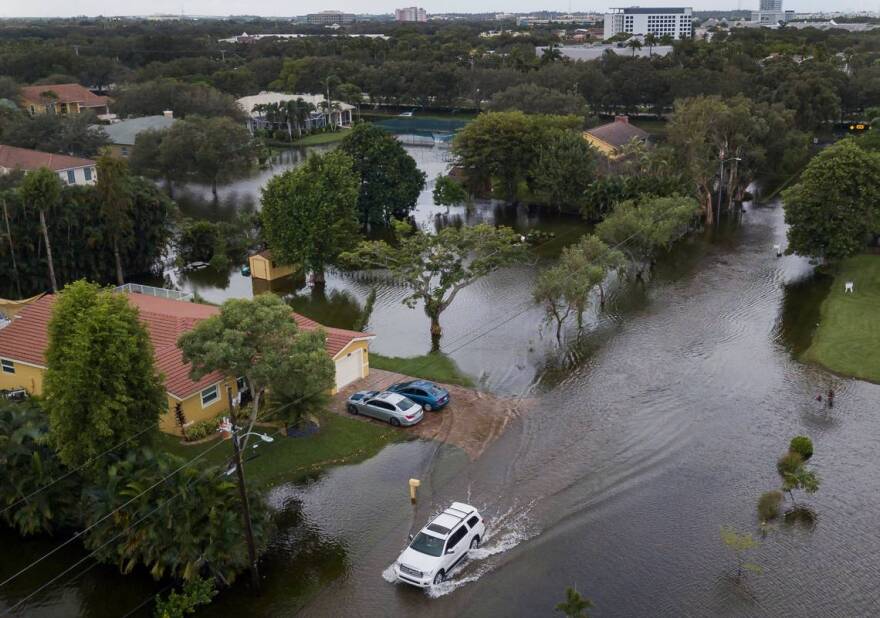South Florida’s sprawling flood control system, increasingly unable to handle flood waters worsened by sea level rise and development, is getting a long overdue update.
At their first public meeting last week the U.S. Army Corps of Engineers asked local governments to weigh in and help define the work that needs to be done.
“If this system was a human,” Miami-Dade County chief bay officer Irela Bague told them, “it would probably be planning retirement right now.”
Authorized in the 1948 Flood Control Act, the network of canals, pumps and drainage features was constructed across 18,000 square miles between the 1940s and 1960s when Florida was mostly agriculture. It only anticipated serving a population of about 2 million.
With a population that’s about four times larger and rising sea levels, parts of the system have already begun to fail.
In Miami-Dade, damaging flood waters from canal discharges are sickening Biscayne Bay, especially at the north end where scientists are investigating fish kills. In Broward County, local canals are backing up because stormwater can’t be released to the regional system, known as the Central and South Florida, or C&SF, project.
When Tropical Storm Eta crossed South Florida in 2020, higher sea levels meant canal gates that would normally release stormwater were closed about 300% longer, said Carolina Maran, resilience chief for the South Florida Water Management District. The district is now updating its coastal pumps.
“It's just a really strong confluence of water management pressures that we're all seeking to manage,” said Broward Resilience Chief Jennifer Jurado. “We're dealing with increased flood severity, duration, intensity … [and] very severe economic considerations.”
Broward, she said, is particularly vulnerable because two-thirds of the county relies on the larger regional system to prevent flooding. The eastern third, she said, has no organized water management system.
Because canal gates that control water levels to block saltwater intrusion are located further west, the county’s wellfields are also in greater peril. About 20-square miles of the drinking water aquifer, she said, has already been contaminated by saltwater.
The combination of more intense rainfall and sea rise, both a factor in climate change, have also meant that canal gates during storms need to remain closed more often.
“We're already seeing the reduced discharge capacity that's occurring as a result of a high tide event. Not extreme high tide, not a king tide, just high tide,” she said.
Water can’t be released into the regional system because of permitted limits.
“And if we are unable to discharge from … our tertiary to our secondary to these primary canals, everything backs up,” she said.
Congress authorized the study last year as part of the Water Resources Act, after heavy lobbying from Florida’s congressional delegation. In a letter three years ago, they called the update long overdue. The last time Congress authorized a re-examination of the C&SF amid growing concerns of worsening environmental conditions, it led to the 2000 Comprehensive Everglades Restoration Act.
The slow pace of that work has led costs to balloon from original estimates of $8 billion to over $23 billion, with only a handful of projects fully finished. At a Wednesday meeting in the Broward County Commission chambers, officials warned that the latest study needs to set a far brisker speed.
“I have been running around like Chicken Little for four or five years screaming about what you're talking about,” said commissioner and longtime state legislator Steve Geller.
As flooding worsens, he worries Broward could suffer more than a decade of severe conditions before fixes are constructed.
“There's going to be … a gap of ten or 15 years between the time that we won't be able to drain and the time that the Army Corps can complete the project,” he said.
While the system starts in Orlando, Congress only approved a study of the southern end in Miami-Dade, Broward and Palm Beach.
Copyright 2023 WLRN 91.3 FM. To see more, visit WLRN 91.3 FM.





